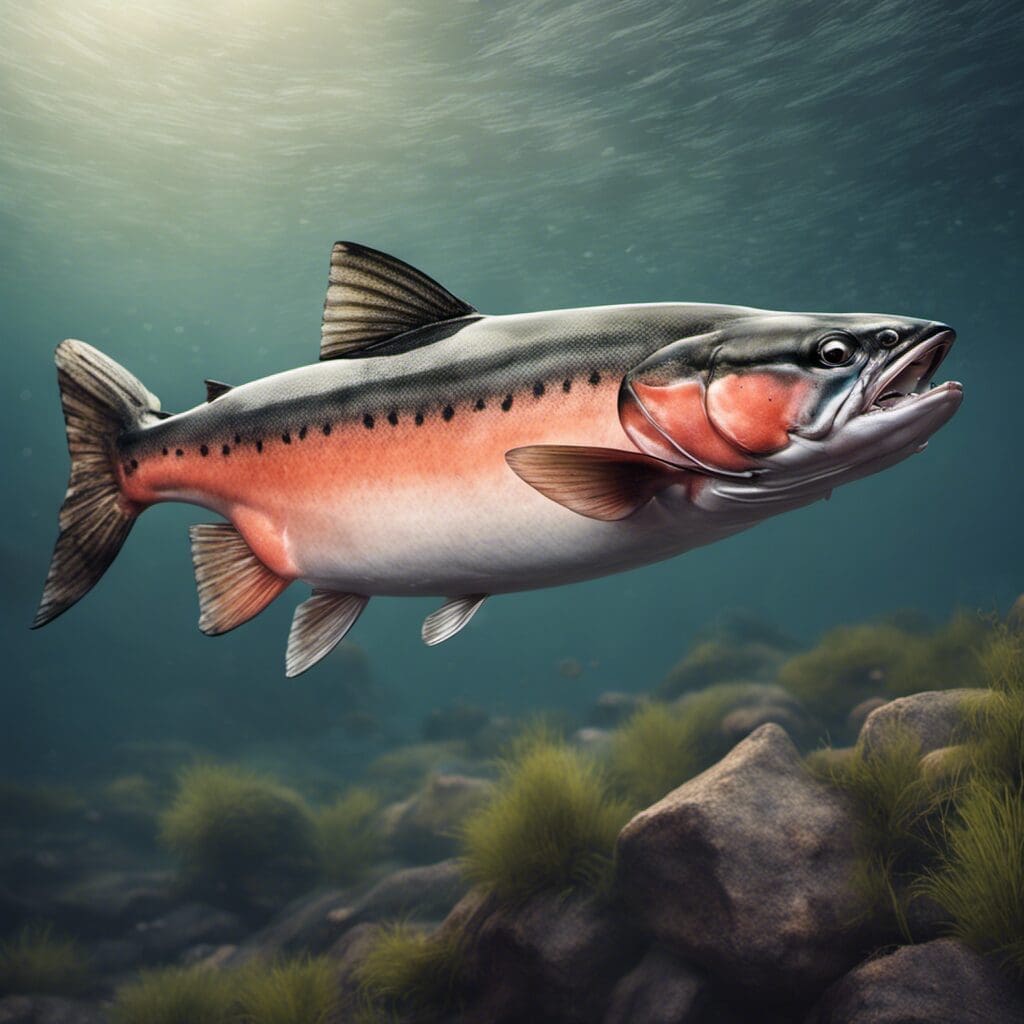Introduction
The Atlantic Salmon (Salmo salar) is a species of ray-finned fish in the family Salmonidae. They are associated with cold, clear waters and have become a defining symbol for the determination and robustness of nature due to their extraordinary journey from freshwater to the Atlantic Ocean and back.
Conservation Status
The Atlantic salmon is currently listed as “Least Concern” by the International Union for Conservation of Nature (IUCN), though their population has been declining. Conservation efforts include restricting fishing seasons, enforcing catch limits, and implementing hatchery programs to increase numbers.
Statistics
| Statistic | Average | Range |
|---|---|---|
| Length | 28 inches | 20-30 inches |
| Weight | 8 lbs | 2-60 lbs |
| Average Lifespan | 4-6 years | N/A |
Distribution
Atlantic salmon inhabit both sides of the North Atlantic Ocean. Their migration patterns are a round journey from their freshwater spawning habitats to the open ocean and back.
Habitats
Atlantic salmon prefer cold, well-oxygenated water. They are found at a wide range of depths and temperature ranges, depending on the time of year and their life cycle stage.
When and Where to See
The best times to see Atlantic salmon are during their migration season, which is usually in the fall. They are most active during the early morning and late afternoon.
Best Fishing Locations
Some of the top locations for Atlantic salmon fishing include:
1. River Dee, Scotland
2. Alta River, Norway
3. Miramichi River, Canada
4. Rioumajou, France
5. River Moy, Ireland
As for the general tip in finding the species, look for clean, cold, and fast-moving waters especially during their spawning seasons.
How to Catch
Fly fishing is the most popular method for catching Atlantic salmon. The best time of year for fishing is during the fall migration. Ideal baits and lures include small fish or flies that resemble their natural prey.
Identification Guide
Atlantic salmon have a slender, streamlined body shape and are generally silver-blue in color with a white belly. Small black spots usually dot their upper bodies. They are similar in appearance to the Brown Trout but can be distinguished by their lack of red spots and their more forked tail fin.
Culinary Use
Atlantic salmon has a rich, slightly sweet flavor and a firm texture. It’s an excellent source of high-quality protein, vitamins, and omega-3 fatty acids. It’s widely used in a variety of recipes such as poached, grilled, or pan-seared, often served with dill sauce or lemon butter.
Additional Information
Atlantic salmon are predators that feed on a diet of smaller fish, squid, and shrimp. They are known for their impressive leaps when migrating upstream to spawn and are subject to predation by birds of prey, seals, and larger fish. Human activities, such as overfishing and habitat destruction, pose significant threats. Their remarkable life cycle and migration have made them a symbol in many cultures representing determination and persistence.
References and Further Reading
For further reading on Atlantic salmon, consider the following sources:
- NOAA Fisheries: Atlantic Salmon
- World Wildlife Fund: Atlantic Salmon
- National Geographic: Atlantic Salmon
The information provided above is intended to offer a comprehensive overview of the Atlantic Salmon species. For more specific or in-depth data, the listed sources or similar reputed institutes should be referred to

